Home Insulation & Weatherproofing Guide: Types, Focus Areas, Expert Maintenance Tips & More
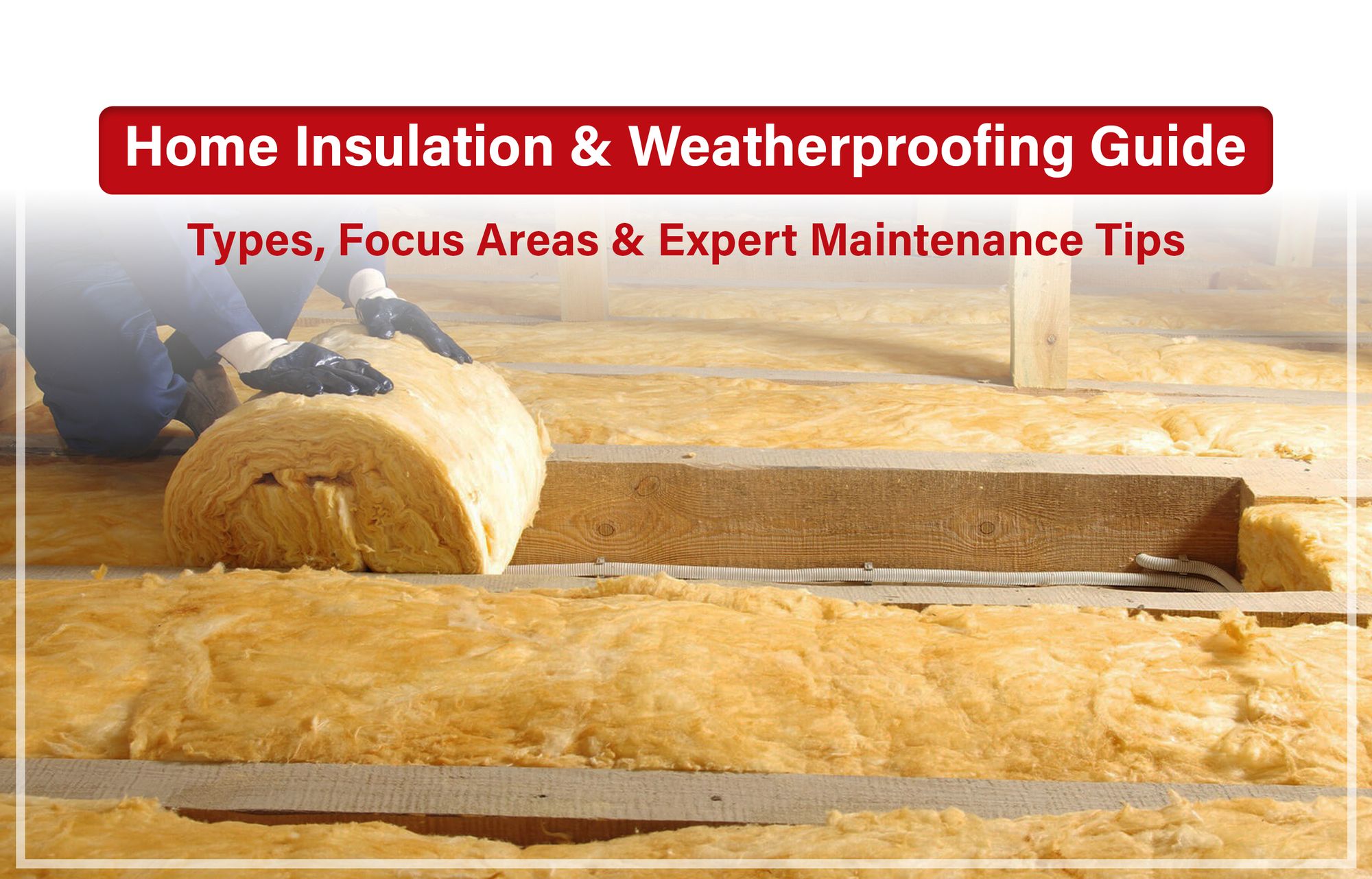
Winter is what comes to mind when you think of home insulation. In reality, however, a properly insulated home plays a major role in comfort and energy savings throughout the year. It keeps the cold air from escaping your home and heat from entering in the summer, while warmth is retained inside your home on a chilly winter night with the right home insulation.
Insulation works quietly in the background, keeping temperatures steady, HVAC systems efficient, and energy bills in check. It reduces the load on your HVAC system by keeping cooled or heated air in. That means fewer temperature swings, less wear on your equipment, and more predictable monthly costs.
Insulation should be the first step to improve your home's overall energy efficiency. It forms the barrier that supports everything else, from smart thermostats to high-efficiency furnaces.
Want to learn more? Let’s start with what insulation really does inside your home.
What Is Home Insulation and How Does It Work?
Insulation is your home’s invisible shield against unwanted heat loss or gain. It slows down how heat moves in and out, helping keep warm air in winter and summer. That means your HVAC system doesn’t have to work overtime to maintain a comfortable indoor climate.
So, how does heat actually move through a home? Understanding that helps explain why insulation matters.
Types of Heat Transfer
- Conduction: Direct heat transfer through solid surfaces like walls and floors.
- Convection: Heat movement through air or water. Think of drafts or rising warm air in a poorly insulated room.
- Radiation: Heat that travels in waves, like the sun heating your attic through the roof.
Insulation materials are designed to slow all three of these processes. For example, fiberglass batts reduce conduction, spray foam can help with air leaks (convection), and radiant barriers reflect heat (radiation).
Where Is Insulation Used?
- Attics: The most critical area since heat rises.
- Walls: Both exterior and interior walls can benefit, especially in older homes.
- Floors and crawl spaces: Help stop cold air from seeping up from below.
- Mobile home skirting: Prevents heat loss from the underside of mobile homes and protects plumbing.
Whether insulating a newly built house or upgrading an old one, the goal is the same: reduce energy loss, stabilize temperatures, and improve comfort.
Which are the Most Common Types of Home Insulation (and When to Use Them)?
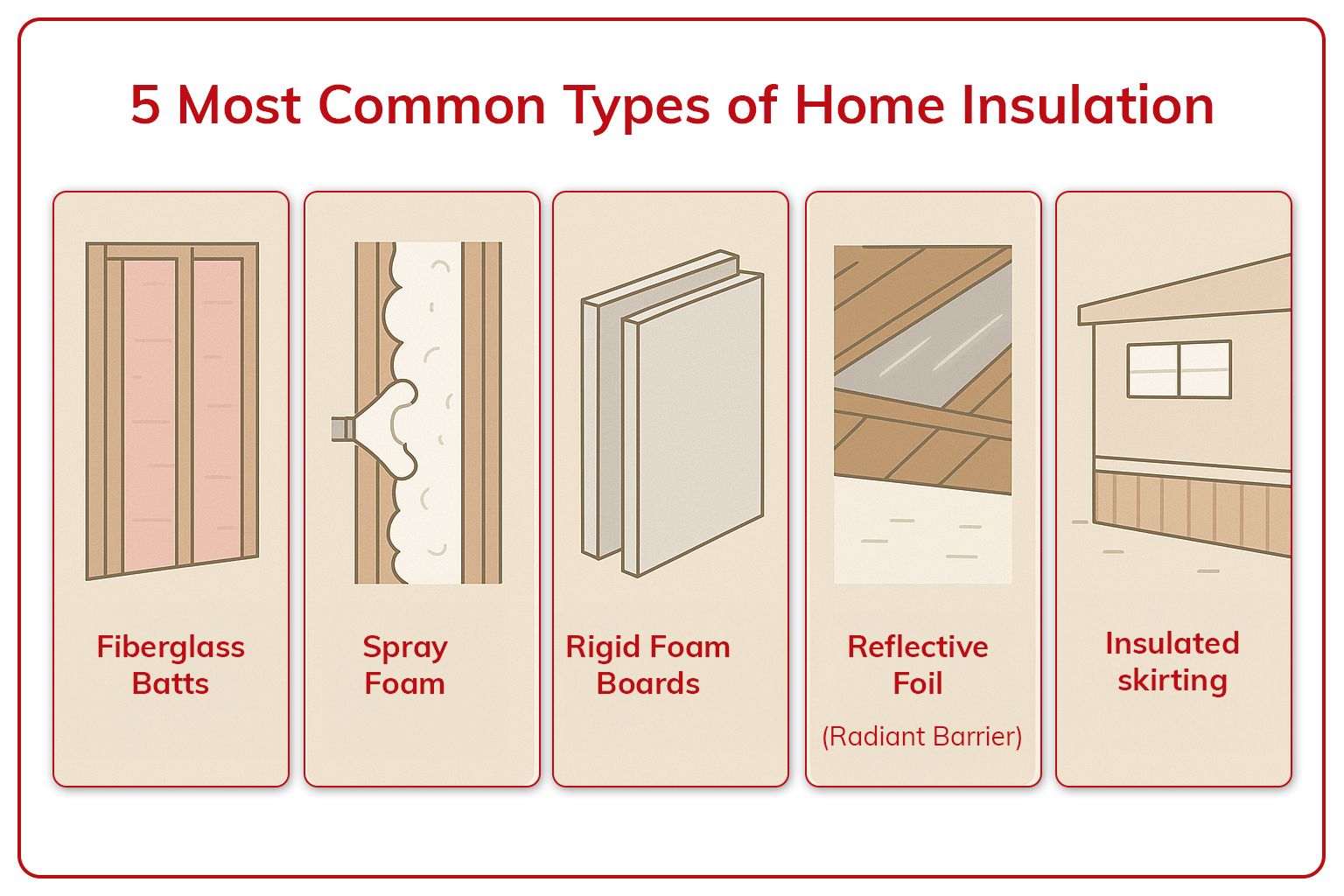
Choosing the right type of insulation depends on your home’s layout, climate, budget, and whether you’re doing the job yourself or hiring help. Here’s a breakdown of the most popular insulation materials, and when and where they work best.
Fiberglass Batts
Fiberglass batts are the most commonly used insulation material, especially in attics and wall cavities.
- Affordable and easy to install for DIYers
- Pre-cut sizes fit standard wall studs and joists
- Works well on unfinished walls, floors, and ceilings
- Best for: attics, open wall frames, garages
They’re also available in kraft-faced and unfaced options so that you can match them to your moisture barrier needs.
Spray Foam Insulation
This is the go-to option for sealing up air leaks and hard-to-reach spots. It expands as it cures, creating an airtight seal.
- Excellent for small gaps and awkward spaces
- High R-value per inch
- Creates a moisture barrier and boosts energy efficiency
- Best for: rim joists, crawlspaces, behind outlets
Many homeowners compare spray foam vs fiberglass when choosing insulation. Spray foam wins for sealing power, while fiberglass is more budget-friendly.
Rigid Foam Boards
Rigid foam boards are durable panels made of polystyrene or polyisocyanurate. They offer high insulation value with a thin profile.
- Commonly used on basement walls or exterior sheathing
- Moisture-resistant and mold-resistant
- Can be layered with other insulation for better results
- Best for: basements, exterior wall sheathing, foundations
Explore rigid foam options when working on foundations or mobile structures.
Reflective Foil (Radiant Barrier)
Rather than trapping heat, radiant barriers reflect it, making them ideal for hot climates or under-roof spaces.
- Installed in attics to reduce heat gain
- Works best when facing an air gap
- Not a replacement for thermal insulation, but a great supplement
- Best for: attics in warm climates, garages, and metal buildings
Insulated Skirting (Mobile Homes)
Mobile homes lose a lot of energy through the exposed underside. Skirting creates a protective barrier that insulates and shields from drafts.
- Helps regulate temperature inside the home
- Reduces pipe freeze risk in winter
- Adds curb appeal and resale value
- Best for: mobile homes, prefab units, trailers
Look into blow-in insulation to fill gaps in mobile home floors and walls.
Signs Your Home Might Be Poorly Insulated
Is your home insulation actually doing its job? Here are some common signs that could point to trouble, without needing a contractor to tell you first.
- Uneven indoor temperatures: If one room feels like a sauna while another feels like a fridge, your insulation may not be distributed evenly or effectively.
- Cold floors or walls: When you touch an exterior wall or floor that feels chilly (even when the heat is on), heat escapes through poorly insulated surfaces.
- Drafts near doors or windows: Persistent drafts often indicate gaps or leaks. Upgrading insulation and adding door and window weatherization solutions can make a noticeable difference.
- High utility bills: Rising heating or cooling costs without changes in weather or usage often point to energy loss, most likely through inadequate insulation.
If you’ve checked off any of these issues, your insulation might be overdue for an upgrade. Addressing it now can save you a lot of discomfort and money down the line.
What Areas Should You Prioritize for Insulation First?
Insulating every corner of your home at once isn’t always realistic. But if you start with the areas that lose (or gain) the most heat, you’ll see results faster in comfort and energy bills. Whether you're blocking out winter chills or summer heatwaves, these zones matter year-round.
Attic
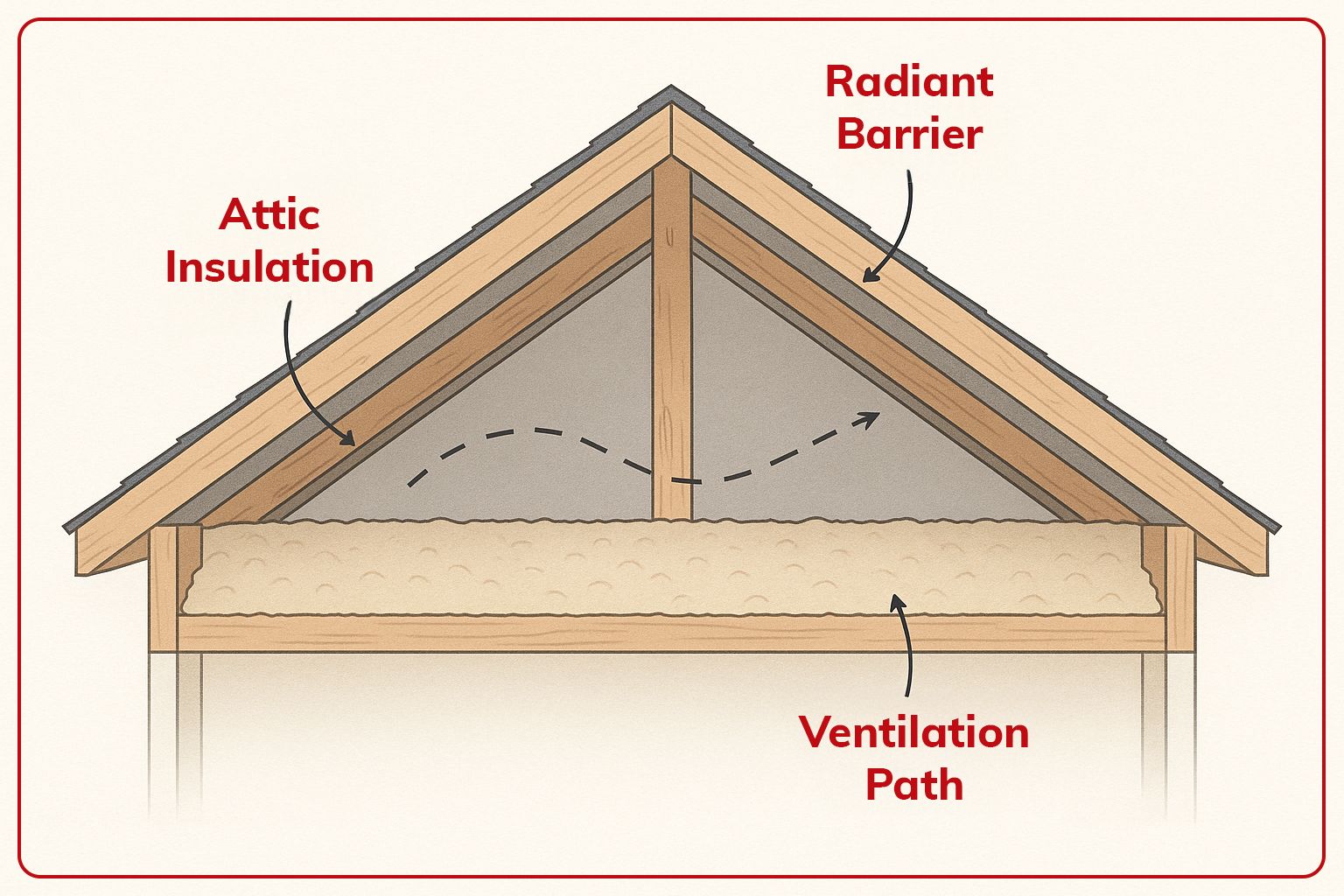
Your attic is the most important insulation zone. Heat rises in winter, and in summer, it turns into a furnace if left unsealed.
- Keeps upstairs rooms from getting stuffy or freezing
- Reduces pressure on your HVAC system
- Works well with radiant barriers or blow-in insulation
Exterior Walls

Walls are often forgotten, but they’re constantly exposed to outside temperatures. Insulating them helps prevent indoor temperature swings, whether you're in a hot or cold climate.
- Ideal for upgrading older homes
- Improves comfort in all seasons
- Supports long-term energy savings
Floors Above Unheated Spaces
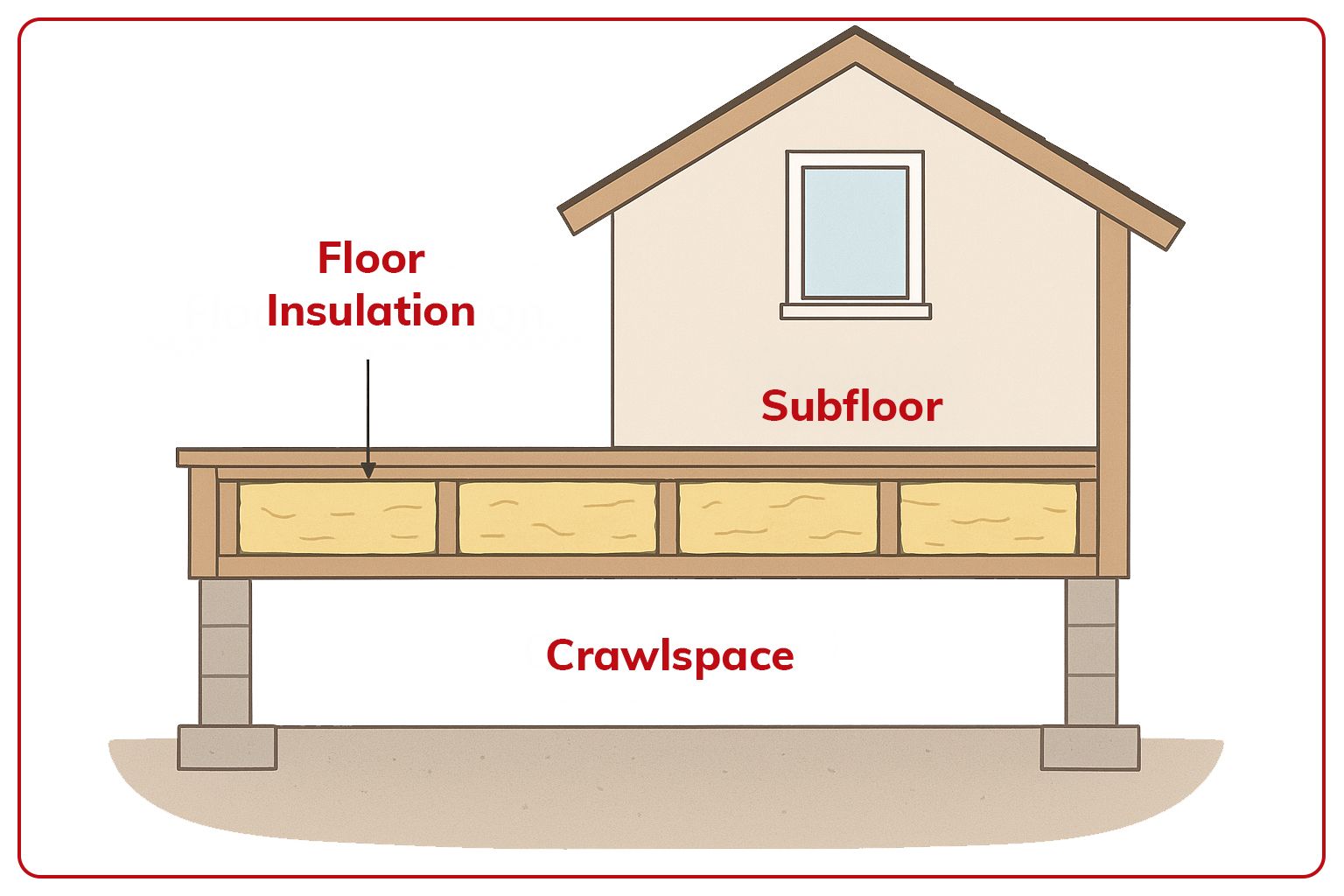
Got a garage or crawlspace beneath your living room or bedroom? That cold or hot air seeps right through the floorboards.
- Reduces drafts underfoot
- Helps stabilize temperatures in rooms above
- Especially useful in split-level or raised homes
Around Windows and Doors
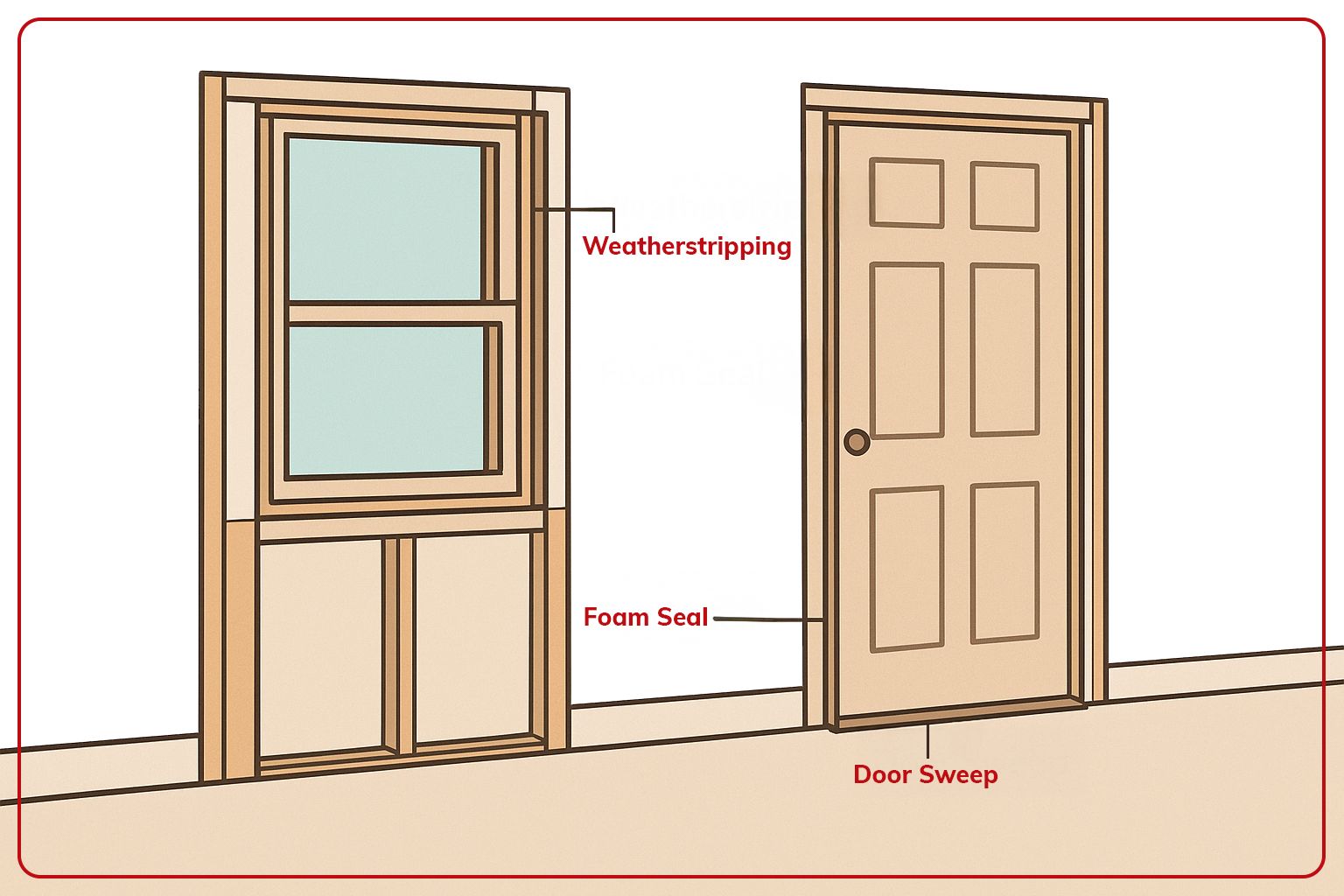
Even the best insulation can’t fix a drafty window or an unsealed doorframe. This is where weatherproofing and insulation overlap.
- Seal small air leaks using foam strips or caulk
- Upgrade to double-glazed windows with insulated glass fabrication tables
- Use insulating glass sealants and dispensers for a more secure seal
How to Seal Drafts with Basic Weatherproofing
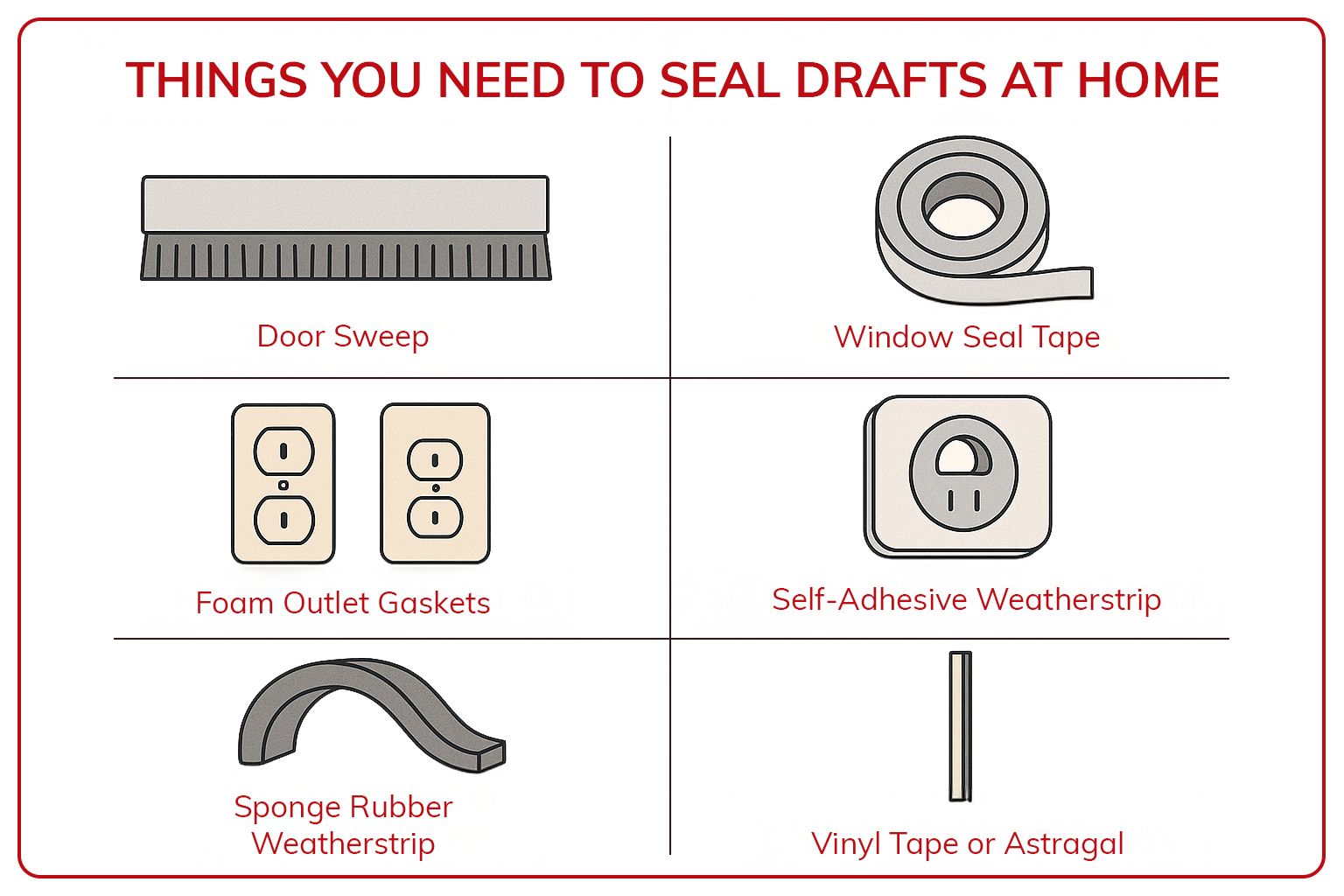
Even the best insulation can’t do its job if outside air keeps sneaking in. That’s where weatherproofing comes in; it fills the small gaps around doors, windows, and outlets that often get overlooked.
Here’s how you can tackle the most common draft points at home:
- Install door sweeps at the bottom of exterior doors. They’re easy to apply and make a noticeable difference in winter and summer.
- Use window seal tape to block cold or hot air from slipping through window frames.
- Add foam gaskets behind outlet covers on exterior walls. It takes minutes but prevents sneaky air leaks.
- Apply self-adhesive weatherstrip along door jambs or window sashes to tighten seals.
Need something more durable? DK Hardware carries sponge rubber weatherstrip, and accent tapes and astragals that work well across seasons and surfaces.
Home Insulation Hacks for Renters or Budget DIYers
If you live in a rented home or you're on a budget, we've got something for you. You don't have to get stuck with sky-high bills or drafty corners. Here are a few renter-friendly ways to insulate and weatherproof without making permanent changes:
- Thermal curtains: They block heat loss in winter and heat gain in summer, all while adding to your décor.
- Removable window film: Think of it like temporary double glazing. It helps maintain temperature without altering the window.
- Draft snakes: Lay them along door bottoms to block airflow in or out. You can even make them yourself.
- Peel-and-stick insulation tape: Great for temporarily sealing up door gaps or window edges.
DK Hardware offers insulating glass starter kits for those looking to make slightly bigger moves. These kits are perfect for basic upgrades in apartments or older homes.
Year-Round Insulation Maintenance Tips
Insulation isn’t a set-it-and-forget-it job. Like any other part of your home, it needs periodic checkups to stay effective, regardless of the season.
Here’s what you should look for:
- Inspect insulation for damage every 6–12 months. Look for signs of settling, tearing, or gaps in coverage, especially after extreme weather.
- Check sealed areas around windows and doors for cracks or peeled tape and reseal if needed.
- Watch for mold or moisture, particularly in basements or attics. These can signal poor airflow or compromised insulation.
- Upgrade insulation if it’s been over a decade, or if you notice consistently high energy bills despite other improvements.
DK Hardware’s insulating glass adsorbents are also useful for absorbing moisture trapped in glass units, which is ideal for maintaining clarity and efficiency.
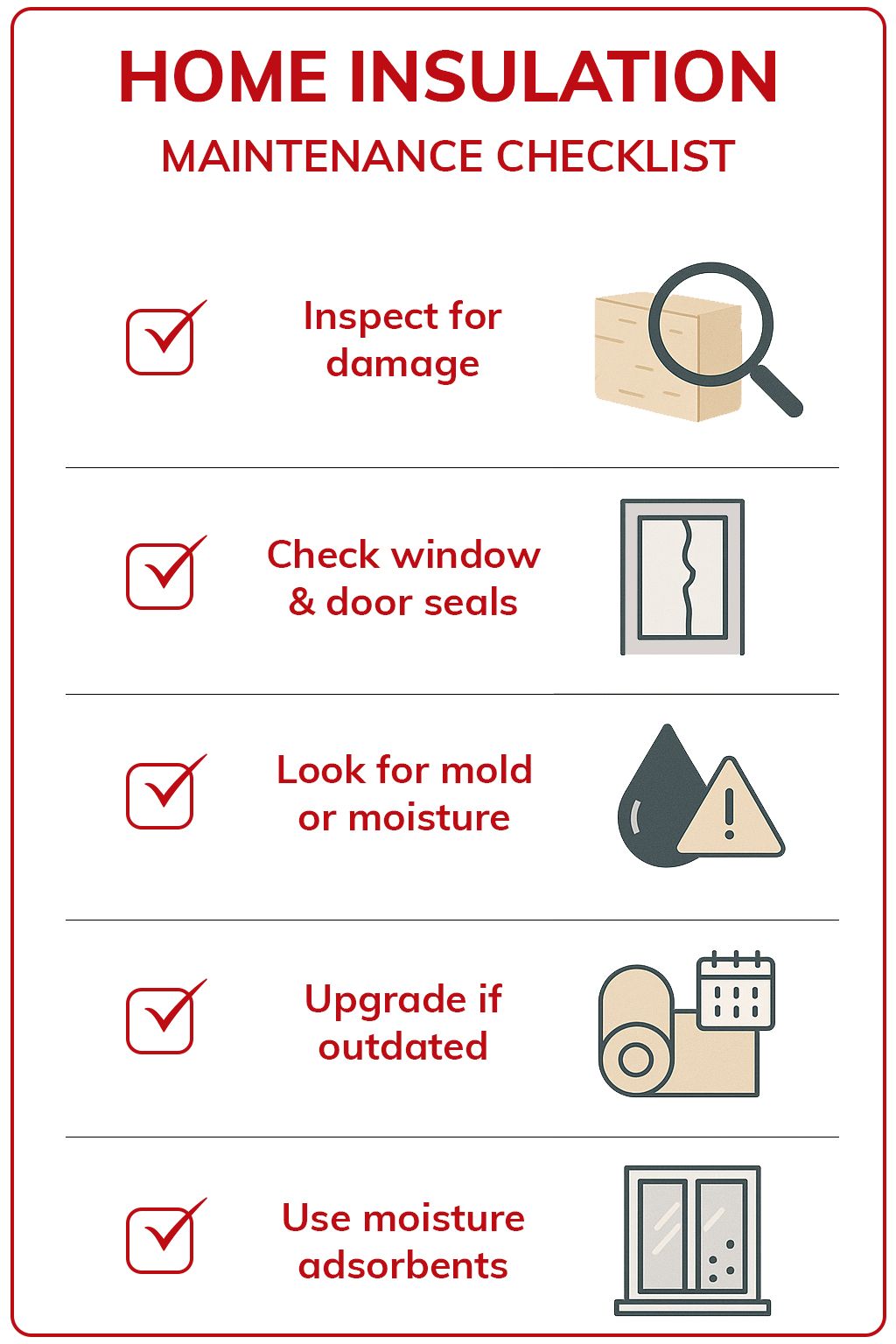
Keep Your Home Comfortable with DK Hardware Supply
Home insulation is the foundation of year-round comfort and energy efficiency. It helps your home stay warmer when it’s freezing outside and cooler when the summer heat rolls in.
When combined with smart weatherproofing solutions, insulation works even harder. Sealing door gaps, adding sponge rubber weatherstrip, or installing insulating glass can save big on energy bills.
DK Hardware’s full range of insulation and weatherproofing hardware is available for all budgets. This is your chance to upgrade an old attic, seal a few drafty windows, or add thermal curtains to a rented house. Start today!
Keep an eye on this section for more guides and home improvement ideas. Meanwhile, don’t forget to follow us on Instagram and Pinterest for instant industry updates, quick tips, and hacks!
